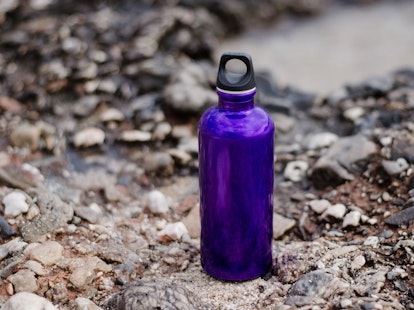EU inspectors will check products in 2022 for compliance with hazardous chemicals under the REACH and POPs Regulations. The report is expected to be published in 2023.
On July 1, 2020 the European Chemicals Agency (ECHA) announced surveillance activities will be carried out on chemicals in mixtures and articles for compliance with Regulation (EC) 1907/2006 ‘Registration, Evaluation, Authorization and Restriction of Chemicals’ (REACH) – a comprehensive piece of legislation for the management of chemicals.
In addition to REACH, the enforcers will also check products for compliance with restrictions on persistent organic pollutants (POPs) under the POPs recast Regulation – a piece of legislation with specific control measures that includes prohibiting or severely restricting the manufacture, placing on the market and use of POPs (SafeGuardS 95/19 and 96/20).
According to the announcement, the enforcement project will be prepared in 2021, with inspections to be carried out in 2022 and the report expected in late 2023. To broaden the scope of control and strengthening the protection of EU citizens and the environment, specific types of material such as plastic, rubber or textiles will be inspected. In addition to determining the list of specific substances in 2021, which may include phthalates as well as perfluorooctane sulfonic acid and its derivatives (PFOS), this project will also check REACH duties on substances of very high concern (SVHCs) in articles for the purpose of communication in the supply chain.
At present, there are 209 SVHCs on the Candidate list for authorization (SafeGuardS 97/20). The inclusion of an SVHC on this list can trigger certain legal obligations for importers, producers and suppliers of an article containing such a substance.
According to Article 3 of REACH, an ‘article’ is defined as an object which during production is given a special shape, surface or design which determines its function to a greater degree than does its chemical composition. Under Article 33 of REACH, suppliers of an article containing a substance on the Candidate List in a concentration of more than 0.1% must provide the recipient of the article (industrial or professional users, or distributors being supplied with an article but does not include consumers) with sufficient information, available to the supplier, to allow the safe use of the article, including as a minimum, the name of the SVHC. This equivalent information should be supplied, free of charge, to consumers within 45 days if it is requested.
It is noteworthy that from January 5, 2021, suppliers of articles containing SVHCs on the Candidate List in a concentration of more than 0.1% are obliged to submit information on these articles to the Substance of Concern in Products Database (SCIP Database) – an obligation established under amended Directive 2008/98/EC (Waste Framework Directive, WFD). Suppliers of articles means EU producers, assemblers, importers and distributors as well as other actors in the supply chain placing articles on the market. Retailers and other supply chain actors who only supply their articles directly and exclusively to consumers are not required to provide information to the SCIP Database (SafeGuardS 163/19).
It is also worth mentioning that since 2003, the EU rapid alert system for dangerous non-food products has facilitated the speedy exchange of information and cooperation between the EU/EEA member states (RAPEX Network) on dangerous non-food products posing a risk to health and safety of consumers. The European Commission 2019 Annual Report and factsheet noted 2,243 alerts and 4,477 follow up actions, with chemicals having the second most notified risk (23%). These products and/or chemicals include:
- Certain toys, including slime toys containing boron
- Clothes
- Cosmetics, including cosmetics containing mercury
- Jewelry
- Tattoo inks – chemicals detected in these products can include polycyclic aromatic hydrocarbons (PAHs), benzo[a]pyrene, cadmium and lead
- Aromatic amines
- N-nitrosamines and N-nitrosatable substances
- Phthalates*
- Polycyclic aromatic hydrocarbons (PAHs)
*From July 7, 2020 the placing of articles, including toys and childcare articles, on the market containing BBP, DBP, DEHP and DIBP is regulated under entry 51 to Annex XVII of REACH (SafeGuardS 2/19).
Definitions
| Item | Acronym | Phthalate | CAS No. |
|---|---|---|---|
| 1 | BBP | Benzyl butyl phthalate | 85-68-7 |
| 2 | DBP | Dibutyl phthalate | 84-74-2 |
| 3 | DEHP | Bis(2-ethylhexyl) phthalate | 117-81-7 |
| 4 | DIBP | Diisobutyl phthalate | 84-69-5 |
SGS is committed to providing information about development in regulations for consumer products as complimentary services. Through a global network of laboratories, SGS provides a wide range of services including physical/mechanical testing, analytical testing and consultancy work for technical and non-technical parameters applicable to a comprehensive range of consumer products. Please do not hesitate to contact us for further information.
For enquiries, please contact:
Hingwo Tsang
Global Information and Innovation Manager
t: (+852) 2774 7420
© SGS Group Management SA - 2020 - All rights reserved - SGS is a registered trademark of SGS Group Management SA. This is a publication of SGS, except for 3rd parties’ contents submitted or licensed for use by SGS. SGS neither endorses nor disapproves said 3rd parties contents. This publication is intended to provide technical information and shall not be considered an exhaustive treatment of any subject treated. It is strictly educational and does not replace any legal requirements or applicable regulations. It is not intended to constitute consulting or professional advice. The information contained herein is provided “as is” and SGS does not warrant that it will be error-free or will meet any particular criteria of performance or quality. Do not quote or refer any information herein without SGS’ prior written consent.



